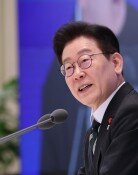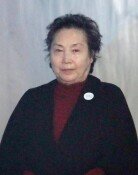Patients of Rare Diseases
Prader-Willi Syndrome (PWS) is associated with partial depletion of chromosome 15 and characterized by excessive eating and consequent development of morbid obesity. If a PWS patient is not treated at the right time, the syndrome could lead to mental retardation and fatal heart problems or diabetes.
The syndrome is incurable because there is no known treatment that leads to a cure. It costs an average of one million won per month to prevent PWS patients from deteriorating. If parents are to enroll their PWS children in a special school in addition to providing the money for medical treatment, costs amount to more than two million won (per month).
If a family with a PWS patient is a low-income household that is a recipient of financial aid by the government, the government pays for its medical bills. But Do-yoons family is not one of these recipients.
According to the Korean Alliance for Rare Disease (KARD), the number of rare disease patients in Korea is estimated at 130,000. On May 28, the alliance hosted the Symposium on Creating an Environment to Facilitate the Treatment of Rare Diseases at Ajou University Hospital in Suwon, Gyeonggi-do. The event was held to explore ways to relieve the families of rare disease sufferers of some financial burden and to help them cope with difficulties.
At the symposium, experts and families voiced their discontent that the government is not providing a system to assist rare disease patients. Although KARD is offering assistance with contributions from benefactors and volunteers cooperation, the lack of the governments serious involvement makes any ultimate solution impossible, the symposium participants argue.
Jang Min-gyu (eight years old) has Williams syndrome, which is characterized by an elfin facial appearance because of its turned-up nose. Kim Jin-ju (41 years old, Seongnam-si, Gyeonggi-do), his mother, said, Its urgent that my son get education, but there are so few welfare facilities in Gyeonggi-do. My son has to go to school in Seoul.
The Ministry of Health and Welfare has been assisting patients of rare diseases since 2001. Many of the beneficiaries are low-income families, and the national program covers 71 diseases, offering 70.6 billion won in total.
KARD President Kim Hyun-ju, also a professor at Ajou University, said, The number of rare diseases reported to the World Health Organization tops 5,000. Governments in other countries prefer a broader definition of a rare disease to give support.
The Citizens Coalition for Economic Justice (CCEJ) says that most European nations have an upper limit of medical costs. In those countries, if a patients share of medical costs exceeds a certain percentage, the rest is remitted. In France, for instance, a patient pays 20 percent of his or her medical costs.
CCEJ Health and Medical Care Chief Kim Jin-hyun, a professor at Inje University, contends, There is virtually no governmental assistance in terms of paying medical bills, let alone helping the rehabilitation and education of patients. Its not just the family members responsibility. The society as a whole has the responsibility to look after rare disease sufferers.
Yang-Hwan Jung ray@donga.com ditto@donga.com



![[속보]한덕수 1심 징역 23년 선고…“내란 가담자 중벌 불가피”](https://dimg.donga.com/c/138/175/90/1/wps/NEWS/IMAGE/2026/01/21/133201789.1.jpg)


![[속보]한덕수 1심 징역 23년 선고…“내란 가담자 중벌 불가피”](https://dimg.donga.com/c/138/175/90/1/wps/NEWS/IMAGE/2026/01/21/133202388.1.jpg)
